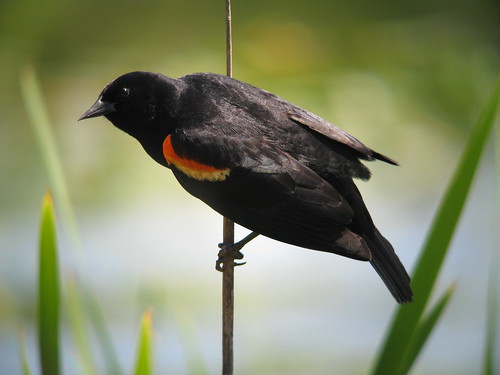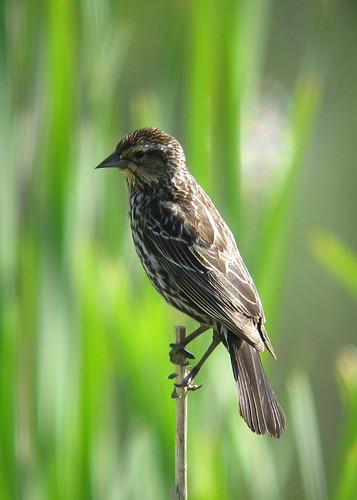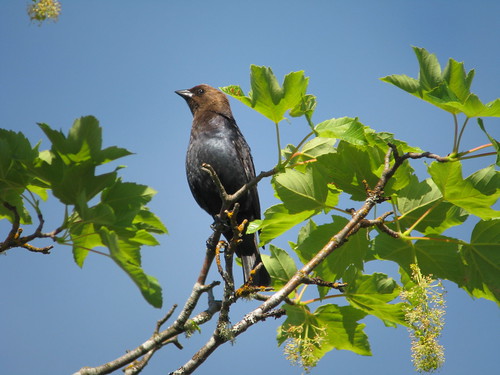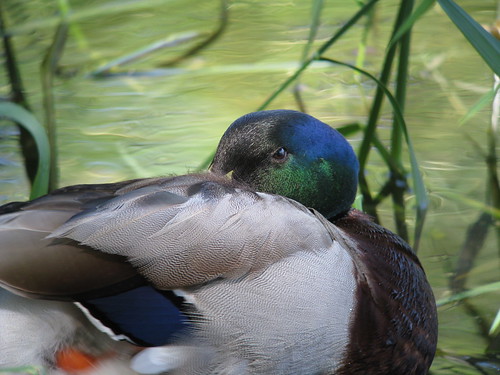As with any skill that must be learned, the old adage is indeed true – practice makes perfect. Therefore in seeking to continue the improvement of my digiscoping skills, I recently took my complete Swarovski digiscoping rig up to Vernonia Lake in Vernonia, Oregon for a bit of a “work-out” with the local avifauna.
When out for a day of digiscoping exercise, it is indeed tempting to seek out a bird, or other creature, that would be assumed to make a real “trophy” image – a warbler, for example. However such urges should be resisted if your primary goal for the day is to improve your skills. For that, you need birds that while not necessarily sedentary do tend to exhibit patterns of behavior and territoriality that can be used to one’s advantage. Flycatchers with their repetitive returning to a particular perch are a good practice subject; so are blackbirds.
Vernonia Lake is a favorite practice spot for me due to the easy drive-up access and plentiful reed beds surrounding the lake. Here in northwest Oregon, reed beds and lakes mean blackbirds – specifically Red-winged Blackbirds, Agelaius phoeniceus. All around the lake, the jet-black Red-winged Blackbird males perch boldly on the cat-tails, displaying their bright red epaulets while the brown-streaked females tend to foraging and nesting activities lower down in the reeds as well as out on the floating lily pads of the lake itself. Both offer regular perch-visiting habits for the observing digiscoper. The males have the additional advantage of possessing highly reflective black plumage – perfect for honing light management skills.
Another solid, local practice subject is the Brown-headed Cowbird, Molothrus ater. Putting aside their brood parasitic behavior, these black and brown birds have some fairly reliable perching habits that allow them to be repeatedly photographed by a practicing digiscoper. Like the male blackbirds, their black plumage can present light management challenges to be addressed, as can their preference for higher perches.
Of course, when visiting almost any lake, never forget the ducks. Often, like robins and crows, ubiquitous to the point of virtual invisibility, ducks make excellent subjects for digiscoping practice. Those found at heavily visitor-frequented lakes can be quite accustomed to people and highly amendable to be being photographed.
Ducks such as this Mallard, Anas platyrhynchos, have a wonderful habit called “loafing.” They find a suitable secluded spot on the edge of a body of water and simply “hang out” for a while, often catching a nap in the process. This particular one was just settling in to his loafing spot when I noticed him. While he no doubt saw me, he must have found me to be no threat as he blinked a few times before finally nodding off to a light sleep.
—
Location: Vernonia Lake, Vernonia, Oregon
Equipment List
Camera: Canon PowerShot SD1100 IS
Spotting Scope: Swarovski ATS 80mm HD
Eyepeice: Swarovski 30x W
Adapter: Swarovski DCB
Tripod: Swarovski Carbon CT 101




